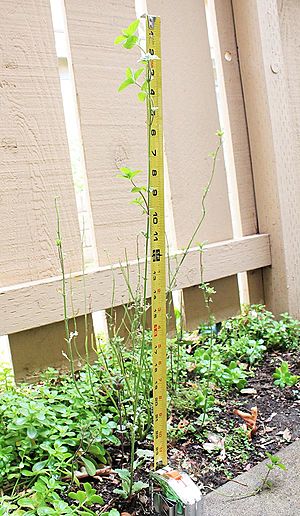Yerba buena facts for kids
Yerba buena, also spelled hierba buena, is a cool name for different kinds of plants that smell really good! In Spanish, "yerba buena" means "good herb." Most of these plants are part of the amazing mint family.
The exact plant called "yerba buena" can be different depending on where you are in the world. It often depends on what plants grow naturally nearby or what people usually plant in their gardens. One of the most common plants known as yerba buena is spearmint (Mentha spicata).
These "good herbs" are known for their special qualities. People have used them for a long time because they are thought to have healing powers. Some are also great for cooking, like making yummy herbal teas or adding flavor to food.
Contents
Different Kinds of Yerba Buena Around the World
The plant known as yerba buena can change from one place to another. Here are some examples of what "yerba buena" means in different regions:
Yerba Buena in the United States
In places like the western United States, "yerba buena" usually means a plant called Clinopodium douglasii. Sometimes, though, it might rarely refer to Eriodictyon californicum, which is more often called yerba santa.
Yerba Buena in Central America
In some parts of Central America, "yerba buena" often refers to Eau de Cologne mint. This is a true mint that some people call "bergamot mint." It has a strong smell that reminds you of citrus fruits. People use it for medicine, cooking, and making tea.
Yerba Buena in Cuba
In Cuba, yerba buena usually means Mentha nemorosa. This is a popular plant that also goes by names like large apple mint, foxtail mint, hairy mint, or simply Cuban mint.
Yerba Buena in Puerto Rico
In Puerto Rico, a plant that is a close relative of the herb savory is sometimes used. This plant is called Clinopodium vimineum.
Yerba Buena in Colombia
In Colombia, Yerba Buena is famous for its many helpful uses. It can help with digestion and with reducing swelling. This herb is mostly found in the mountain regions of the country, especially in areas like Cundinamarca and Antioquia.


